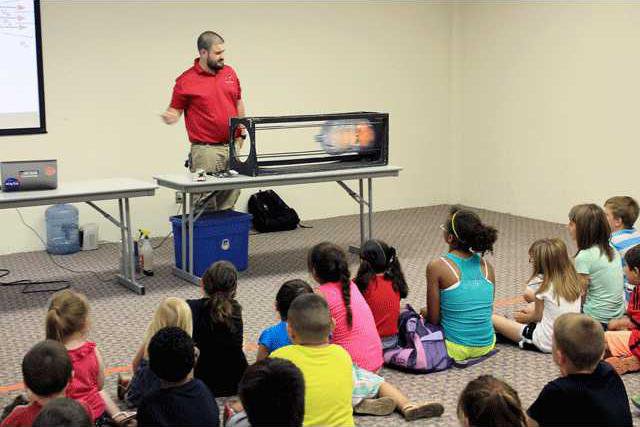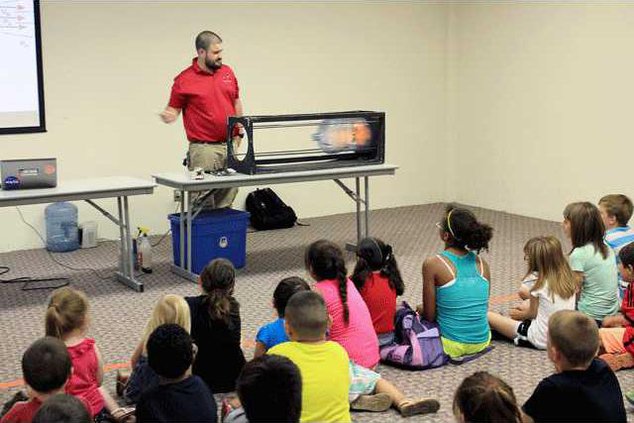The parking lot of the Great Bend Public Library was blocked all day Wednesday in anticipation of a rocketry demonstration that afternoon. Chuck McClary, Education Staff for the Kansas Cosmosphere explained the history of liquid fueled rockets and demonstrated the power of ignited methanol in the library basement, thrilling a larger than anticipated crowd. Then, it was time for an even great demonstration outside.
As the audience lined the sidewalk along the north edge of the library, Great Bend Police and the city’s street crew blocked off Broadway between Stone and Williams streets. McClary used a combination of liquid oxygen and water to fuel the rocket he assembled from an empty 2 liter bottle, a five gallon bucket and a 30 gallon trash barrel. As he poured the liquid oxygen which was stored at a temperature of 300 degrees below zero, the temperature where oxygen boils and becomes a gas, white smoke began to drift across the parking lot. Then, he assembled the rocket and once each component was in place, he walked moved to the edge of the parking lot. After less than a minute, the pressure from the gas became so great, the bucket and trash barrel launched into the air, soaring at least 10 feet above the top of the nearest street light on Broadway, and then descended to the ground to the cheers of all who were in attendance.
At the presentation in the basement, McClary explained how the experiments of Dr. Robert H. Goddard, a pioneer in the science of rocketry, led to the creation of the largest rockets ever created, used to power the Apollo missions of the 1960s. Currently the National Aeronautics and Space Administration is working on creating an even larger rocket, he said, that will be able to carry enough fuel to travel to the planet Mars, hopefully by 2030.
Rocket demonstration draws crowd to library





